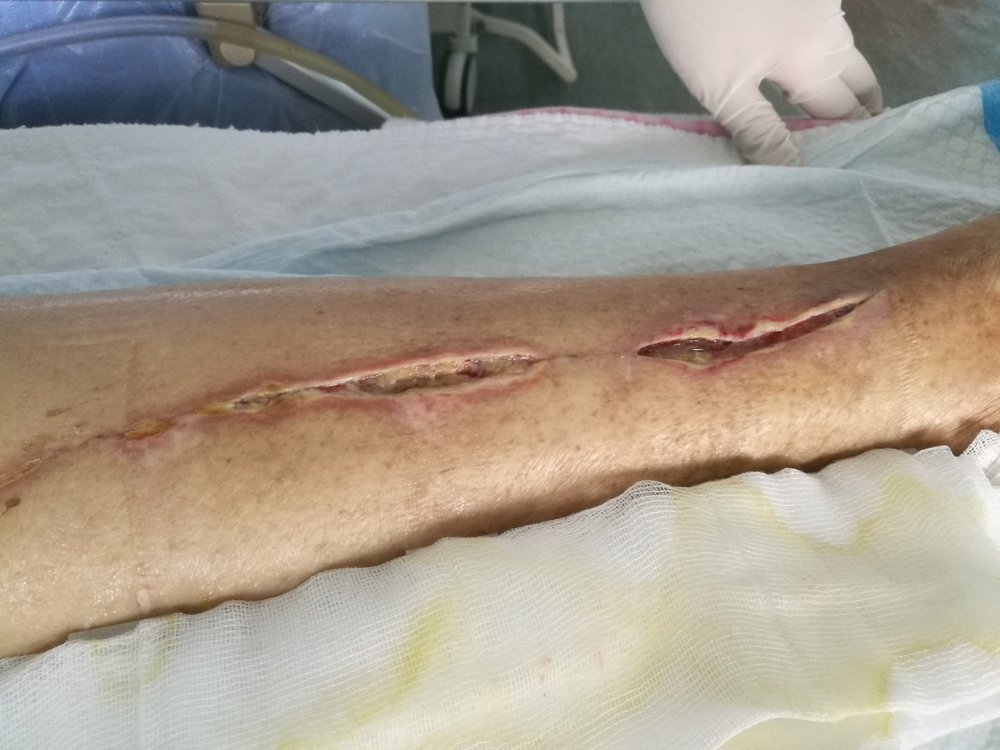Like other skin injuries resulting from trauma or chronic disease, surgically created wounds are prone to infection. The onset of a surgical site infection will negatively affect the rate of wound healing achieved after any operative procedure. Properly diagnosing and managing surgical site infections will significantly improve postoperative outcomes in all categories of patients.
What Is a Surgical Site Infection (SSI)?
A surgical site infection may be defined as the colonization of a surgical incision by infectious agents (bacterial or fungal). It can involve the incised skin area, the organs underlying the surgical cut, or the spaces between the organs. A surgical site infection will usually develop within thirty days of a surgical operation.
Types of Surgical Site Infections
According to the United States Centers for Disease Control (CDC), surgical site infections can be categorized into three:
- Superficial incisional SSI is limited to the skin area where an incision was made
- Deep incisional SSI where the infection develops below the incised skin and spreads to affect surrounding muscles and other soft tissue
- Organ or space SSI can disseminate to any part of the body to affect organs or organ spaces
Risk Factors for Surgical Site Infections
Different factors determine the risk of a patient developing a surgical site infection. The most critical determinants are highlighted below:
- Degree of contamination encountered intraoperatively
- History of previous surgical outcomes
- Presence of co-morbidities (diabetes, chronic hypertension, peripheral arterial disease)
- Obesity
- Elderly persons
- Smoking
- Cancer
Clinical Signs and Symptoms
Clinical surveillance for danger signs in patients recovering from surgical wounds is crucial to the early identification and treatment of surgical site infections. As a general rule, an infected surgical site will manifest classical signs of inflammation. Redness, heat, swelling, and acute pain within or around the healing incision site, are common complaints from patients who develop SSIs. Also, each category of SSI earlier mentioned in this article has a specific clinical picture that aids in solidifying a diagnosis. A superficial incisional SSI may develop pus along the margins of the infection. A deep incisional SSI might not be immediately evident but will also produce purulent material following a spontaneous wound deterioration, or an intentional wound reopening by the attending surgeon. An organ or space incisional SSI, will typically form an abscess within affected organs or fill the spaces between them.
Laboratory and Radiological Testing
The standard approach to identifying the pathogens involved in a surgical site infection involves collecting a wound swab and culturing for different aerobic and anaerobic microorganisms. Apart from bacteria, wound swab samples can also be used to identify fungal disease-causing agents. Ultrasonography is the single most useful radiological tool in the diagnosis and treatment of surgical site infections. An ultrasound scan can be used to determine the presence of collection or abscess within a surgical site, and guide its drainage.
Principles of Treatment
Antibiotic therapy remains the cornerstone principle in treating SSIs. Additionally, adequate wound site care, excision and drainage of abscess collection, and clinical surveillance are also critical aspects of the intervention.
Antibiotic Therapy
Once a diagnosis of surgical site infection has been established, antibiotic therapy should be started immediately. Empirical antibiotics covering a broad range of infective organisms should be started immediately after collecting swab samples for lab testing to determine the specific organisms involved. Once the organism causing the SSI has been identified, antibiotic therapy should be modified according to the sensitivity patterns of the particular pathogen.
Suture Removal/Incision and Collection Drainage
Any identified collection of pus must be opened and evacuated. Surgical incision and drainage for wound abscesses will provide instant relief for the affected patient. Restraining sutures should be removed, allowing access to infected sites for adequate wound cleaning/debridement.
Wound Dressing
Healthcare personnel involved in managing infected surgical wounds must ensure the wound site is regularly dressed after evacuating an abscess/pus collection. Clean wound dressings should be regularly applied to the wound area under aseptic conditions as this will boost the development of healthy granulation tissue.
Surveillance
Health care staff should ensure continued surgical site monitoring to ensure optimal wound healing is occurring. The presence of pink healthy granulation tissues, absence of offensive discharge from the wound site, and stable patient vitals are indicators of satisfactory tissue recovery.
Prevention Tips
Surgical site infections contribute significantly to the overall cost of healthcare among surgical patients. Inhibiting its onset is therefore a top priority among healthcare providers. Prevention strategies can be implemented at all stages of surgical treatment (pre, intra, and post-op).
Pre-op Measures
- Use prophylactic antibiotics
- Shave area to be incised as hair can serve as a nidus for infection
- Encourage good lifestyle choices (smoking cessation, reduced alcohol consumption, weight loss)
Intra-op Measures
- Adequate skin prep before incision. Use povidone-iodine or chlorhexidine to clean the area
- Proper gowning and gloving
- Observation of total asepsis
Post-op Measures
- Regular wound inspection and dressing changes
- Pay special attention to surgical wounds in hard to reach areas, natural skin folds
- Assess tissue viability often and clean/debride as necessary
- Administer intravenous and oral antibiotics as indicated after assessing intra-op contamination status



.webp)

.avif)